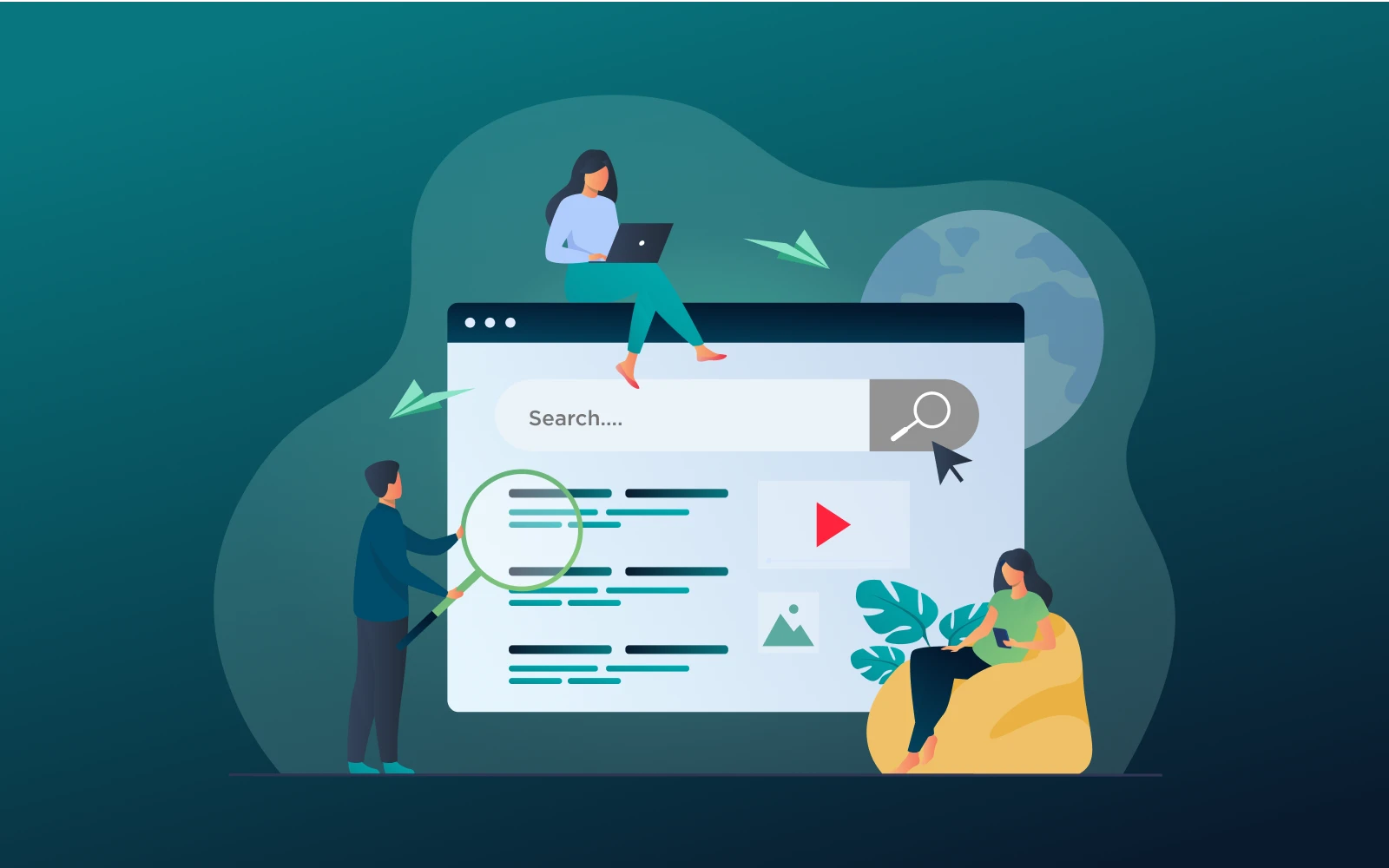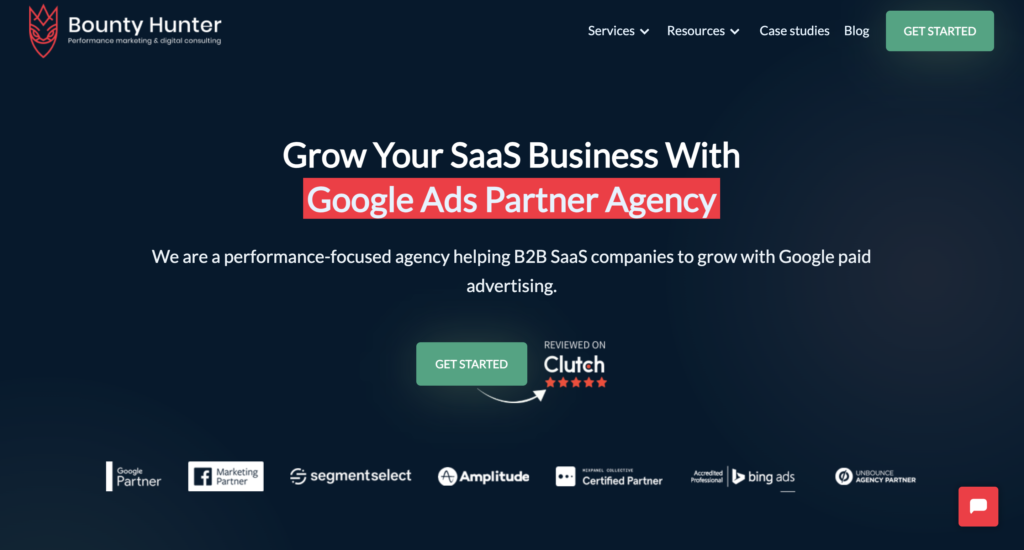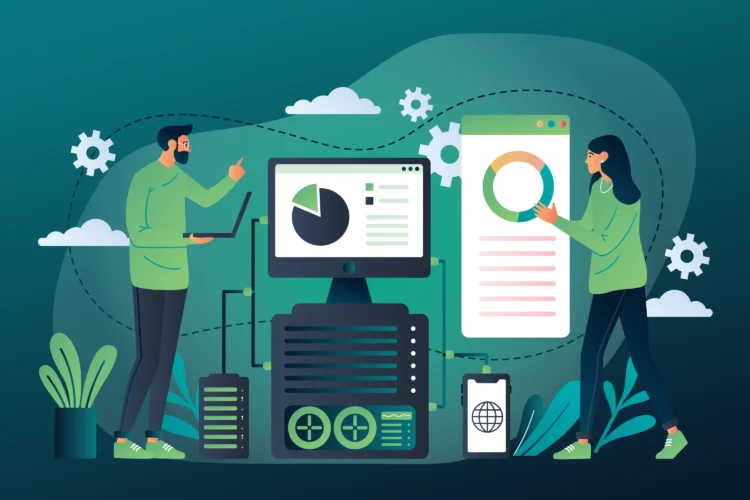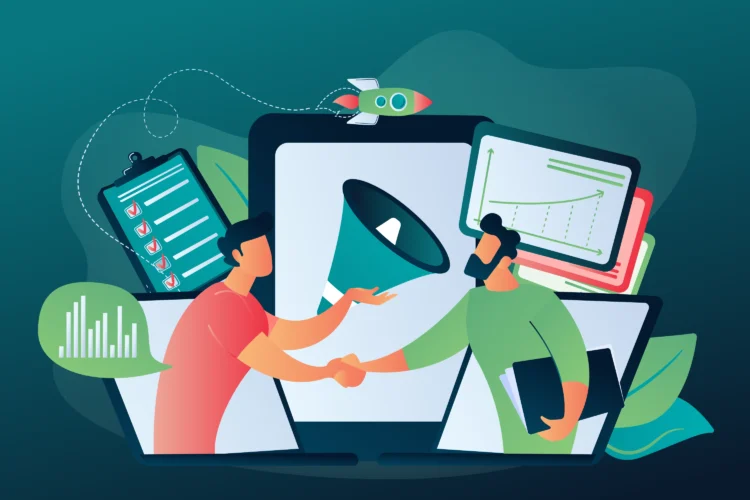
If you’re running a SaaS or B2B tech business, you know that hiring a specialized Google ads agency can be a powerful way to reach new customers and grow your business.
But with so many agencies out there claiming to be experts in Google Ads, it can be tough to know who to trust. When hiring an agency or outsourced consultants, there are quite a few important things to think about. Luckily, we’ve done that legwork for you.
What Does a B2B SaaS Google Ads Agency Do?
A B2B SaaS Google Ads Agency specializes in marketing software products to businesses, with a primary focus on managing Google Ads campaigns. In addition to Google Ads, they also have expertise in other major ad platforms, including Bing (Microsoft Advertising), Facebook, LinkedIn, Capterra, and others. Working in the SaaS industry requires a lot of in-depth understanding of the unique challenges and opportunities that come with this type of business — and that’s exactly what distinguishes a good professional.
If you hire one, the agency will first work with your business to identify your goals, target audience, and budget. After that, they will create and manage your campaigns. Once they have a clear understanding of your company’s customer KPIs and revenue data, they are able to assure the effectiveness of promotional campaigns.
In a nutshell, B2B SaaS marketing agencies help companies promote and sell their products to other businesses.
Using PPC advertising is an effective way to reach out to potential customers who are already interested in what you have to offer. And with the help of a professional Google Ads agency, you can maximize your chances of success.
Why Should I Use a Google Ads Agency?
Google Ads is an incredibly powerful tool; if used correctly, it can be a game-changer for your business. There are several reasons to use a Google Ads agency for growing your B2B SaaS business.
1. They have the two “E”s – Expertise and Experience
An agency has the experience and skills to create and run successful campaigns, which will increase the number of highly qualified leads in your sales pipeline. They know how to research keywords, write compelling ad copy, build high-converting landing pages, assess in-market and affinity audiences, and set up campaign tracking so that you can measure your results.
2. Saves You Time and Money
A win-win situation. Creating and managing a successful Google Ads campaign for B2B can be time-consuming. If you don’t have the time to learn about the platform and create effective campaigns, working with a Google Ads agency can save you time by allowing you to outsource this task to experienced professionals.
They can help you avoid common mistakes that can cost you money and get your campaigns up and running quickly so that you can start generating leads immediately.
3. B2B is way more complex than B2C
Running and optimizing Google Ads campaigns is not only time-consuming, but also demands a high level of skill, especially when dealing with business-to-business tech businesses.
Keep in mind that the cost per click (CPC) for Google Ads is significantly higher in the B2B market compared to the B2C one. Also, the average lifecycle of a B2B client is far greater than that of a B2C one. When the stakes are this high, doing it alone isn’t always a go-to option.
4. Constant algorithm update
Google Ads is always evolving, which is why many businesses choose to work with professionals that can adapt to these changes. What worked last year might not work this year, and what works this month might not work the next.
A good agency will stay on top of all the latest changes and ensure that your campaigns are always up-to-date.
How Do I Choose the Right Agency?
When choosing a Google Ads agency for your B2B SaaS business, it’s essential to choose an experienced agency that specializes in working with companies similar to yours.
Depending on the complexity of your Google Ad account (which is mostly affected by the monthly ad budget, number of campaigns, number of keywords, number of locations, and even whether you require multilingual campaigns) your team should consist of various roles. Make sure the agency you’re looking into has professionals dedicated solely to copywriting, bidding and optimization, web design, and reporting & analytics.
You should also search for transparent pricing so you know precisely what you’re paying for. Finally, be sure to read reviews and ask for references before making your decision.
Best Google Ads Agencies For SaaS & B2B Tech Businesses
It’s difficult to pick the right professional from the vast pool of digital nomads and marketers. Without a track record of successful advertising, making a decision is next to impossible. To help you find the best Google Ads agency for your business, we’ve compiled a list of the top five agencies that specialize in SaaS and B2B tech businesses.
1. Bounty Hunter

For more than five years, the Bounty Hunter agency has been helping B2B SaaS companies maximize the potential of the Google ad network. The agency’s primary focus is on managing advertising campaigns and developing long-term pay-per-click strategies to increase the number of high-quality leads and new customers.
The agency’s mission is to acquire new customers and monitor and optimize SaaS KPI metrics such as customer acquisition cost, CAC payback duration, customer LTV, time to adoption, and conversion rate improvements. The Bounty Hunter agency uses these metrics to ensure that Google Ads campaigns will succeed in the long run.
Because the agency mainly works with products from the US and Western Europe that are aimed at the worldwide market, in addition to Google Ads management, they have expertise in advertising on other ad networks such as Bing (Microsoft Ads), LinkedIn Ads, Capterra Ads, and Facebook Ads.
Best for: B2B SaaS companies with established product market fit or B2B Tech companies with VC funding
Specialized for: Google search, Google Display Network, Conversion rate optimization
Top clients: ActiveCollab, Tokeet, Manifestly, Sell The Trend, Medesk, Global App Testing.
2. Ad Kraft
This agency has extensive experience working with SaaS & B2B Tech Businesses, positioning these companies highly on the market.
The Ad-Kraft agency has been a Google Partner for many years, and two years ago, they became a Google Premier Partner. This achievement resulted from their commitment to providing superior service when it comes to Google Ads, as well as the other types of digital solutions.
They are experienced in managing successful Google Ads campaigns for many companies from the tech industry. By working with these companies, they have gained vast knowledge and insight into the issues, from which they have developed customized Google Ads strategies that target the right audience and achieve marketing goals that deliver outstanding results. In this way, they have become a part of many successful business stories.
The Ad-Kraft team includes experts in Google advertising, SEO, Web Development, Web Design, Microsoft Ads, LinkedIn Ads, and Meta advertising. Additionally, they offer hosting services, making them a great place for all your digital marketing needs.
Best for: SaaS brands (B2B and B2C)
Specialized for: Google search, Google Display Network, Youtube ads
Top clients: Resource 360, Foodspring
3. Unlmtd Digital
Unlimited Digital Agency is a full-service digital agency with a focus on providing marketing technology services in SaaS and E-Commerce companies and focuses on advanced marketing stack implementation. They are mostly known for setting up data tracking and building profitable campaigns across Facebook and Google’s channels.
Also, they are super knowledgeable about building funnels, optimizing campaigns, setting up proper data tracking and metrics, and running paid prospecting and retargeting campaigns. They manage $1+ million of monthly marketing budgets and generate over $100 million in revenue for their clients yearly, typically 3x–8x their marketing return.
Unlimited Digital Agency helps businesses develop winning marketing strategies and online sales funnels that will skyrocket their business performance. They do this by using their experience, deep industry knowledge, and hard data.
Also, this agency is known as the white label partner for some of the most prominent digital agencies in the world, like The Phenomenon or The HOTH.
Best for: B2B and B2C SaaS companies, E-Commerce brands
Specialized for: Google search, Google Display Network, Youtube ads
Top clients: Ahrefs, Authority Builders, BuddyBoss.
4. Powered By Search
Powered by Search is a results-driven marketing agency specializing in helping SaaS and B2B tech businesses grow their revenue through effective Google Ads campaigns. The team at Powered by Search has a lot of experience making and running successful Google Ads campaigns for companies in many different fields, such as healthcare, education, and e-commerce.
Since 2009, they have helped B2B software and technology clients grow and eventually dominate their markets in areas like investor relations, finance, law, healthcare, logistics, shipping, and network security. They use a tried-and-true methodology and rigorously implement the necessary steps to enable the business to reach its ideal prospects.
Best for: B2B SaaS companies
Specialized for: Google search, Google Display Network
Top clients: Basecamp, Rainforest, Loopio
5. Kalungi
Kalungi is a digital marketing agency that offers various services, including Google Ads management. Their team of experts will work with you to create a customized campaign that meets your specific needs and goals.
While Kalungi exclusively serves very specialized clients, they do everything for B2B SaaS businesses, including competitor analysis, customer journey mapping, persona research, and podcast series creation. They help startups and software entrepreneurs grow any B2B SaaS firm through any stage of marketing maturity.
Best for: B2B SaaS products, other B2B Tech companies
Specialized for: Google search, Google Display Network
Top clients: Zippity, iControl, Beezy
Hire the Right Google Ads Agency For Your SaaS Business
Google Ads for SaaS is a powerful way to reach your target audience and promote your business online. And when you’re dealing with low-quality leads, poor conversions, meager revenues, and a virtually unknown brand, hiring a B2B SaaS marketing agency is your best option.
There are a lot of great Google Ads agencies out there that can help your business grow. They can open the door for rapid growth by launching your SaaS to a larger audience. But when it comes to finding the right one for your business, it’s essential to consider your needs and budget.
These are just some of the many great Google Ads agencies that specialize in working with SaaS and B2B tech businesses. Whichever agency you choose, be sure to do your research to ensure they’re a good fit for your business before making any commitments.
Author








